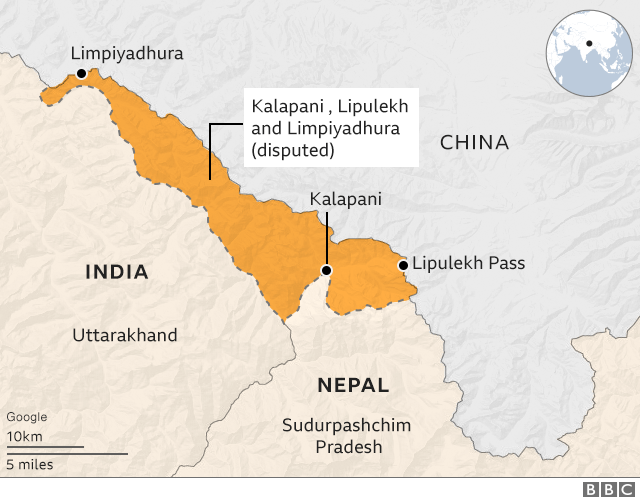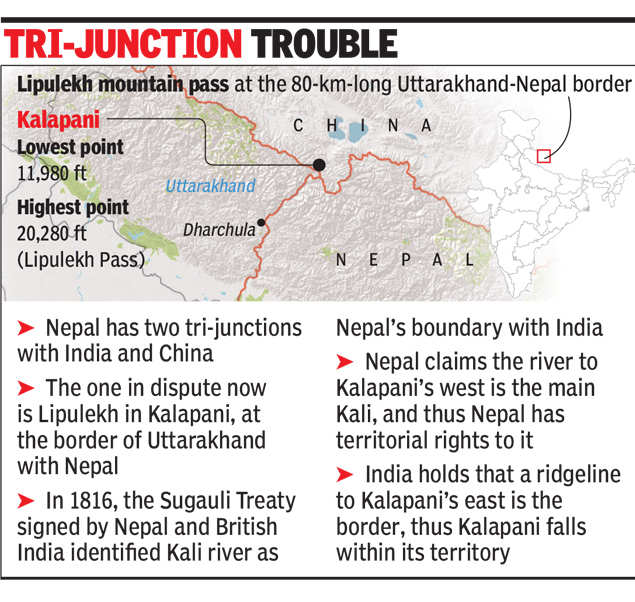India- Nepal ties

Copyright infringement is not intended
Context: Nepal's former Prime Minister pledged to "take back" the territories of Kalapani, Limpiyadhura and Lipulekh from India through dialogue if his party comes back to power.
Lipulekh pass
- It is a far western point near Kalapani, a disputed border area between Nepal and India. Both India and Nepal claim Kalapani as an integral part of their territory — India as part of Uttarakhand's Pithoragarh district and Nepal as part of Dharchula district.
Story so far:
- The bilateral ties came under strain under then Prime Minister Oli after India opened an 80-km-long strategically crucial road connecting the Lipulekh pass with Dharchula in 2020.
- Nepal protested the inauguration of the road claiming that it passed through its territory.
- Days later, Nepal came out with a new map showing Lipulekh, Kalapani and Limpiyadhura as its territories.
- India reacted sharply, calling it a "unilateral act" and cautioning that such "artificial enlargement" of territorial claims will not be acceptable to it.
Unchanging perspectives
- The Nepal-India relationship has never been free of controversy as the perspectives of both sides are yet to change.
- Nepal government amended the Nepal map to add new territory to deflect attention from the poor management of the COVID-19 pandemic by his government.
- Nepal wanted to discuss the map with India but the latter did not provide any time for a discussion.
- India continues to think that by providing largesse to Nepal in the form of aid and development projects, it can win Nepali hearts.
- But despite pouring billions of rupees into Nepal over decades, it has still not been able to do so. Therefore, it needs to reflect on what it is not doing right.
Two issues that need to be addressed
- First, Indian aid is seen in Nepal as a favour bestowed on a constituency it wants to garner support from rather than a contribution to Nepal’s planned development.
- Second, India competes with China in providing aid outside government budgets. And China picks up projects of visibility and strategic location. Chinese involvement in Nepal has increased since the April 2015 earthquake and Nepal is surely an area of strategic influence in China’s Belt and Road Initiative.

People-to-people ties
In the past two decades, two significant changes have happened in this area.
- First, Indian workers in Nepal constitute a big part of the workforce and send about $3 billion to India every year. In terms of remittances to India, Nepal ranks eighth. So, the Government of India needs to keep in mind that many households in India are being run with remittances from Nepal.
- Second, the new Nepal is comprising of young people with global aspirations. Nearly three-fourths of the population of Nepal is under 35 years of age. India needs to engage beyond its current constituency and Nepal needs to plan how it engages with the youth in mainland India.
Conclusion:
- There are some fundamentals that we simply cannot forget: geography will not change, the border will remain open as millions of livelihoods on both sides depend on it, and China is going to be a big global player with varied interests in the neighbourhood.
- Therefore, the India-Nepal relationship has to be recalibrated.
https://pib.gov.in/PressReleasePage.aspx?PRID=1775142



1.png)
